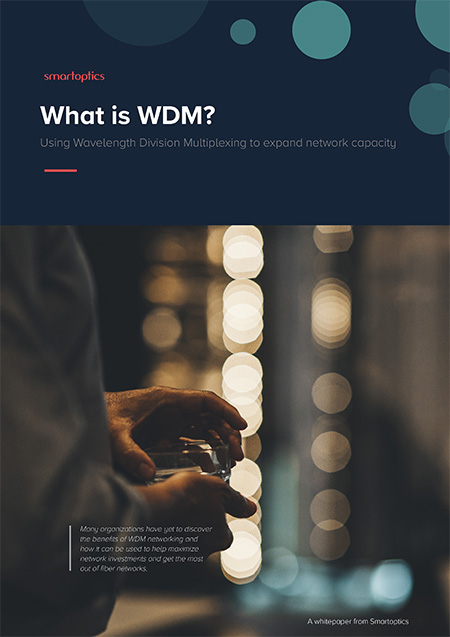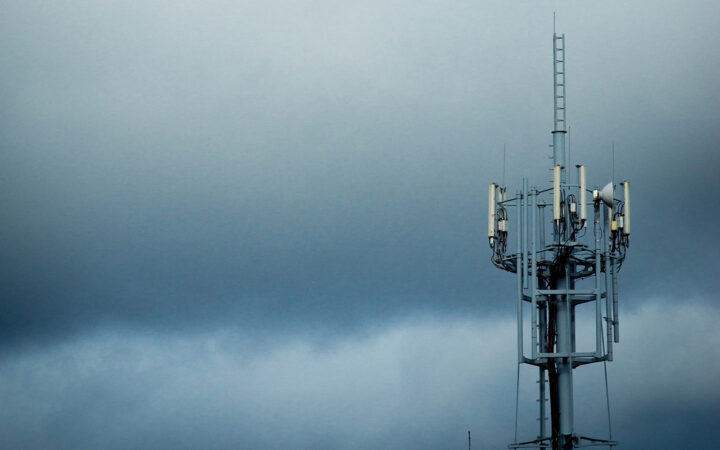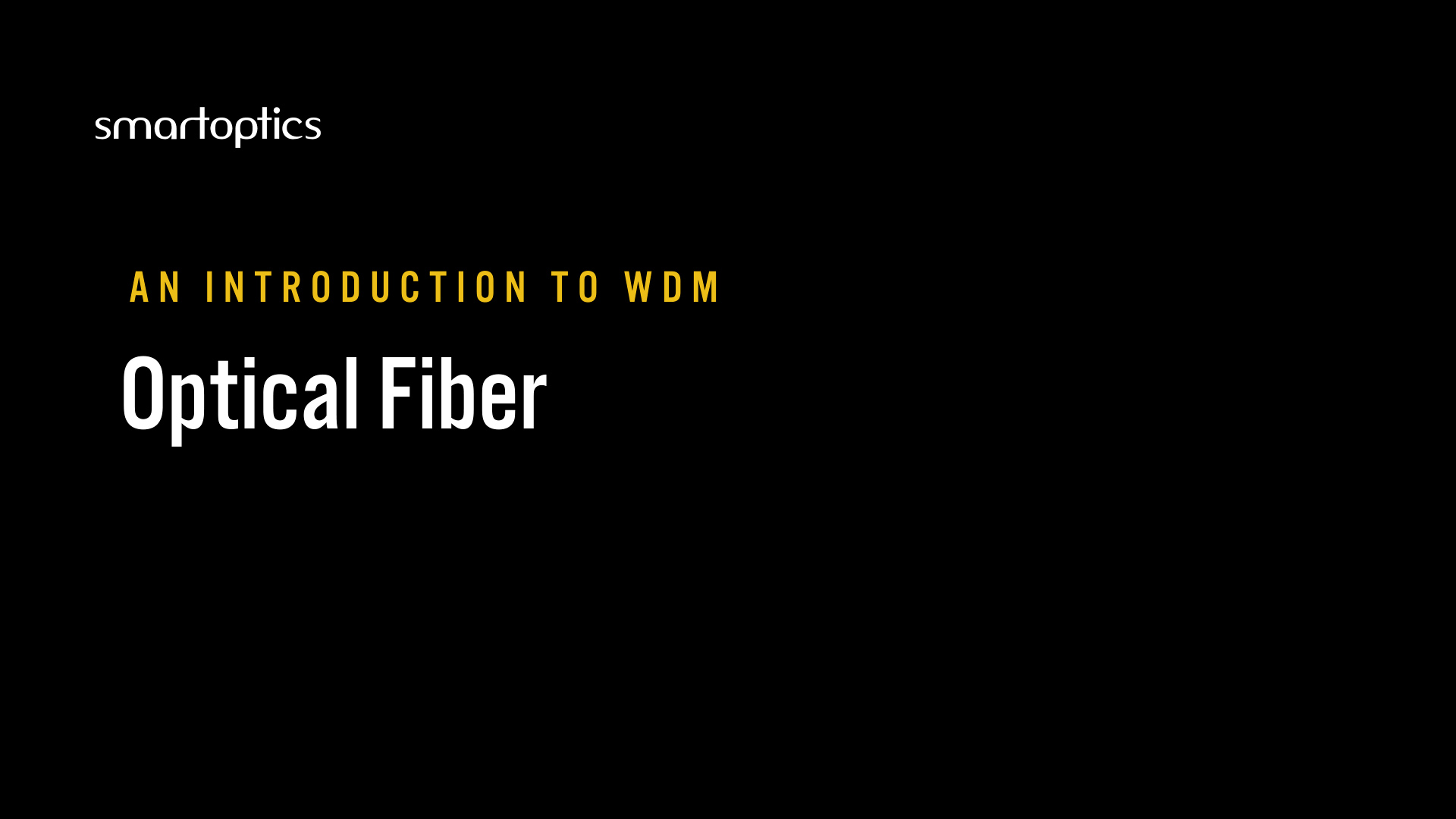WHAT IS AN OPTICAL FIBER?
We’ve looked at an analogy for fiber networks that compares them to a road network. Fiber itself, however, is tiny – about the same diameter as a strand of human hair – and the traffic it carries is in the form of light. To the human eye, light appears white, but it’s actually made up of many colors, each of which can be its own traffic channel, in its own fixed lane.
The composition of an optical fiber
Fiber is normally made of pure silica (glass) due to its pure qualities and the properties that give it good total internal refraction, an effect that forms the basis of fiber optical communication. Basically, the optical fiber consists of a core, cladding, and coating.
The light travels down the core, which is protected by the cladding that stops the light from escaping – this is total internal refraction/reflection. Because of the properties of silica, the light bounces inside the core instead of escaping, as if reflecting off a mirror. This can be done even up hills and around corners, creating the light pulses that make data transmission possible inside of a fiber optic cable. The coating is added to protect from damage and moisture.

Types of optical fiber
There are two primary types of fiber, each of which has a different application. These are multimode (MM) fiber, which has a large core and allows for multiple paths through the fiber, and single-mode (SM) fiber, which has only one path, through a much smaller core.
| Multimode fiber | Single-mode fiber | |
| Coating diameter | 250 µm | 250 µm |
| Cladding diameter | 125 µm | 125 µm |
| Core diameter | 62.5 µm (Graded index) | 9 µm |
| 50 µm (Step index) |
Multimode optical fiber
Multimode fiber optic cable allows multiple modes of light to pass through a large core, which in turn increases the number of reflections as the light passes through. The advantage of this type of fiber is that lower-cost transceivers can be used, but it also introduces a lot of dispersion and attenuation. In short, it means that the size of the core leaves so much room for light to bounce as it’s sent down the fiber that the quality of the signal degrades quickly. It also can’t be amplified, which means that it is only suitable for short distances where simpler and cheaper transceivers can be used. I.e., where a low-cost solution is needed.
For any distance greater than 200-300 meters, the multimode fiber isn’t suitable. It’s most frequently found where these short distances are all that is needed, such as inside a data center. An example of this is OM4 fiber, capable of handling 10 and 100G traffic signals up to 100 meters.
There are two main types of multimode fiber:
Gradient-Index Multimode Fiber
This is the more common type of multimode fiber in use today. With the gradient-index multimode fiber, the light traveling close to the axis travels more slowly than the light near the cladding, which results in better grouping of the light rays. The refractive index, then, diminishes gradually from the center axis out toward the cladding.

Step-Index Multimode Fiber
In this type of multimode fiber, the light travels in various zigzag and direct routes, bouncing off of the cladding. The result is that different “modes” of light arrive at different times at the other end of the fiber. When the different modes begin to spread out, the signal loses some of its shape.

Single-mode optical fiber
A single-mode optical fiber has a smaller core than multimode fiber and allows only one mode of light to travel through. Because there are fewer light reflections this type has the lowest signal attenuation, and the light can travel farther. It interfaces with single-mode optics, which uses lasers as a source of light, sending a single wavelength in a straight line down the fiber. It still has the same 125µm cladding as the multimode fiber, but the core is typically 9µm, instead of 50µm or more.
Single-mode fiber has a higher bandwidth and is the most suitable type of fiber for long-distance networking. It, too, comes in several types, optimized for different regions in the fiber.

Non-dispersion-shifted fiber
Non-dispersion-shifted fiber (NDSF) was the most common type of fiber installed in the 1980s. It was optimized for the 1310nm region of the fiber – the wavelength for optical networking before wavelength division multiplexing (WDM) systems became common. NDSF has low dispersion in that range, which means that it doesn’t allow very much light to bounce around in the core. But at 1550nm, the range where modern WDM systems reside, it has much higher dispersion, which means that the distance for connectivity is limited.
Dispersion-shifted fibers
There are two types of dispersion-shifted fibers. The basic dispersion-shifted fiber type is optimized for use at 1550nm, but is limited to a single-wavelength operation, making it problematic to use with some types of modern WDM systems. There is also non-zero dispersion-shifted fiber, which has much less dispersion and is the optical fiber of choice for new fiber deployments. It is the most useful of all single-mode fiber types to high-capacity, high-data-rate DWDM systems.
Explaining this article to a non-technical person:
Optical fiber is tiny, about the diameter of a strand of human hair. It’s made of silica (glass), chosen for its ability to reflect light in a way that allows the light to transmit data efficiently. It’s made up of a core, through which the light travels, cladding, which prevents the light from escaping, and a coating, which protects the fiber from damage and moisture. A fiber that has a larger core can be used with inexpensive transceivers over short distances, but can’t be amplified or used between remote sites. A single-mode fiber, with a much smaller core, can carry data longer distances, due to its ability to transmit a single laser with less loss of quality.

Related articles

What is a SAN and how does it protect mission-critical workloads?

What is Fibre Channel used for?

